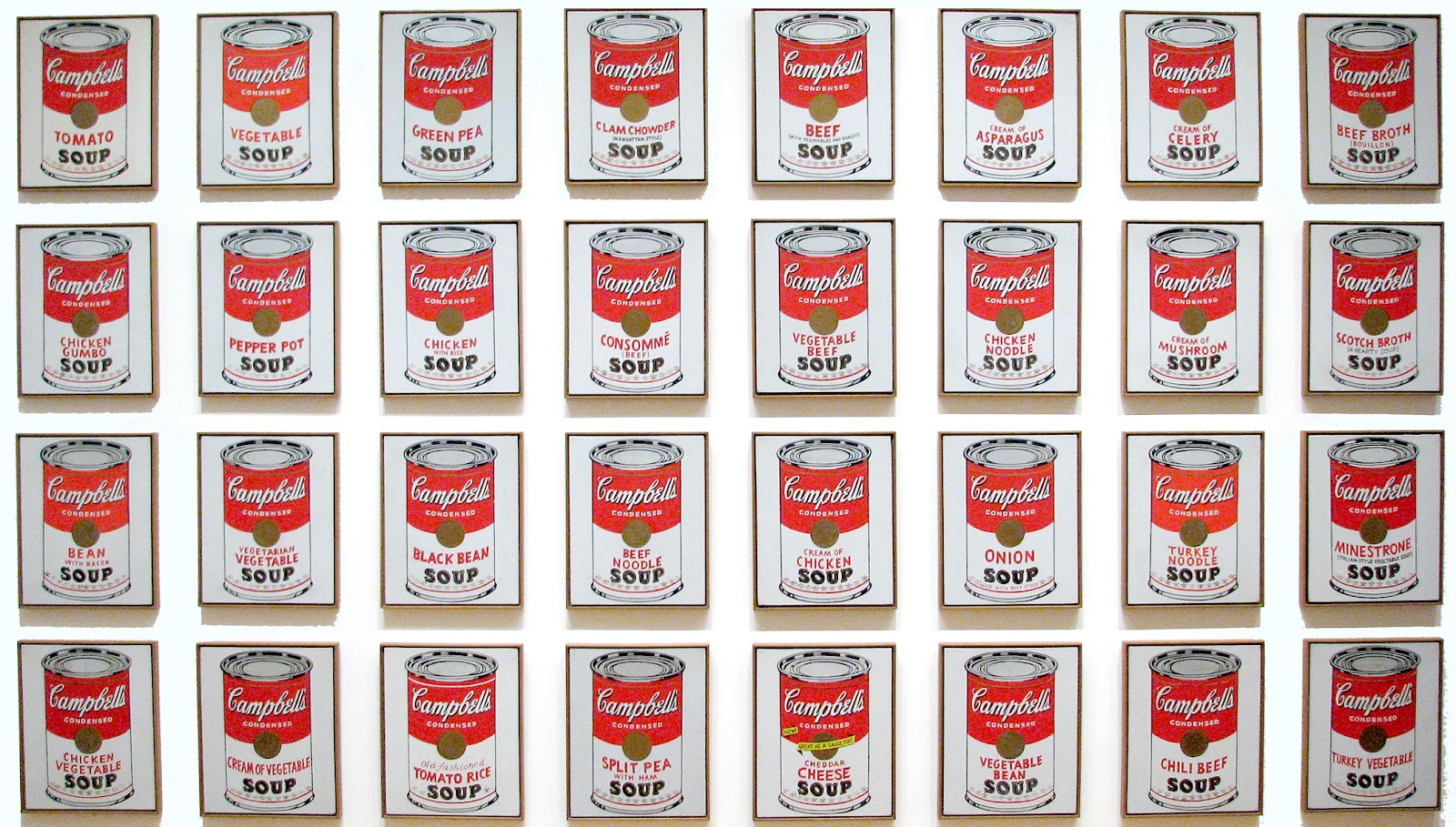Pop Art History
(1954-1970s)
- began in Britain and USA in the 1950s, drawn from popular media and products.
- Usually very bright colors, fun, youthful drawings, with imagery from comic books and newspaper photographs.
- characterized a sense of optimism during the post war consumer boom of the 1950's and 60's. It coincided with the globalization of pop music and youth culture.
- included different styles of painting and sculpture from various countries, but all shared a common interest in popular culture.
- The subject matter became far from traditional "high art" themes of morality, mythology, and classicism, but rather commonplace objects and people, seeking to elevate popular culture to the level of fine art.
- By creating paintings or sculptures of mass culture objects and media stars, the Pop art movement aimed to blur the boundaries between "high" art and "low" culture. The concept is that there is no hierarchy of culture and that art may borrow from any source.
- first to recognize that there is no unmediated access to anything, be it the soul, the natural world, or the built environment. Pop artists believed everything is inter-connected, and therefore sought to make those connections literal in their artwork.
- does not critique the consequences of materialism and consumerism; it simply appreciates popular culture and recognizes its pervasive presence as a natural fact.
- seemingly embraces the post-WWII manufacturing, capitalist consumerism and media boom.
- ties the commodity status of the goods represented to the status of the art object itself, emphasizing art's place as, at base, a commodity.
- Artists: Robert Rauschenberg, Andy Warhol, Ed Ruscha, Roy Lichtenstein, Claes Oldenburg, and James Rosenquist.
- tried to close the "gap between art and life"
- Combines are a series a works in which he collected materials and trash from various sources and integrated them into his canvases. It involved collaging newsprint, magazines and photographic materials and combining both painting materials and everyday objects such as clothing, urban debris, and stuffed animals (esp. birds)
- boundaries between art, sculpture, everyday objects were broken down as all were present in a single work of art
- Question: Was it a random arrangement of random choice of materials? Or do these arrangements denote meanings? Are there many meanings, or one single specific meaning?


Rebus by Robert Rauschenburg (1963) Estate by Robert Rauschenburg (1963)
Andy Warhol
Campbell's Soup Cans by Andy Warhol (1962)
Marilyn Monroe by Andy Warhol
Drowning Girl by Roy Lichtenstein (1963) BLAM by Roy Lichtenstein (1962)
Savarin by Jasper Johns (1977)
Below: Hollywood by Ed Ruscha (1968)

Sources:
http://en.wikipedia.com
http://www.artyfactory.com/
http://www.arthistoryarchive.com/
http://arthistory.about.com/
http://arthistory.about.com/


.jpg)





